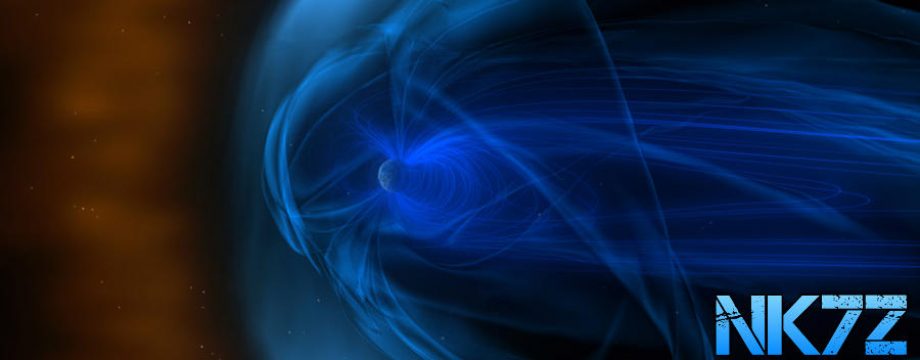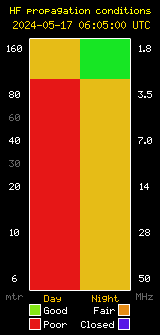![]()
Afreet Software has a suite of programs out for the Amateur Radio Operator, which are very useful, and in some cases work together swapping data between themselves, I have a few of them and will review them all over the next few months. The second program in this series of reviews is HamCap.
HamCap is a very simple front end for a very complex piece of backend software called VOCAP. What VOCAP does would be a paper in and of itself, so just click here to see an overview of VOCAP, if you don’t want to read the nine sections on VOCAP, just assume it is one of the best pieces of software available for prediction of current propagation conditions. In any case, HamCap uses the VOCAP engine to make propagation predictions, and then presents it to the user in a very simple view. It populates ALL of the VOCAP setup, and operational items which VOCAP would need, and allows the operator to put in the Sunspot numbers, and the K index, (it will get these automatically, but more on that later), and you get a map of the world showing the current predicted propagation S/N ratios, or a point to point chart showing the best times on all ham bands between two points. I have used HamCap for several years, and all in all it seems to be pretty accurate.
Just how accurate I was unaware of until I started using JT65 mode, and PSKReporter. I decided to see how accurate HamCap was in realtime, using PSKReporter, and DXAtlas images. The test was performed as follows:
A prediction map was sent to DXAtlas, and a PSKReporter real-time propagation report was taken during the same five-minute period and during a QSO on 20 Meters I had.
The resultant images were scaled to be the same size, and then overlapped one on top of the other using GIMP. In the event you are not aware what PSKReporter does; it uses a network of hundreds of stations, all across the planet, listening on each ham band, and then centralizes all the stations then active into a map. One can select any station, and get a realtime map of how the propagation is at that moment, on that band. The PSKReporter map for NK7Z is shown on the left, as well as the DXAtlas map.
The third map is a combination of both maps, scaled to be the same size, showing the predicted propagation, and the actual propagation in one image. Note that the yellow ovals are actual stations which heard my JT65 signal, and note that the lighter areas are the predicted signal strengths for my station. Further note, that the predicted areas of good propagation, have contained within them the ovals from PSKReporter. This validates the propagation model at least for this single run. I noticed that they were matching much more than I would have expected, hence the combined image, testing the idea that HamCap/VOCAP can actually predict propagation pretty well. In my mind this really shows that VOCAP and HamCap have things well under control for prediction of propagation.
HamCap has the ability to look forward in time as well, thus you can see when the best time to work that DX station you have wanted for years is. In Fact, you can use HamCap as a point to point prediction program. That is to say, you input the call sign of the target station, and assuming you have correctly set up HamCap, it will give you a rather nice graph, showing the best times, and bands for working that area of the world. Of course your target area has to have active hams in it, but that is when PSKReporter comes in handy. In short you have a set of very powerful programs in your hands, to not only predict, but test propagation conditions.
Anyway, back to HamCap. If you get tired of typing in the Sunspot numbers, you can automate that process by using IonoProbe. IonoProbe automates HamCap. You install HamCap, then IonoProbe, select the settings and click the IonoProbe button. That is all you need to do. Now IonoProbe will collect real-time solar data, pass it to HamCap, and HamCap becomes automated. You just press two buttons total to make this happen. Once it is in place, you have real-time propagation maps, with current solar data, all automatically presenting themselves on your screen. If you want larger maps, press the DXAtlas button, and DXAtlas starts up, using the data from HamCap, showing you propagation conditions as predicted by VOCAP/HamCap. Looking at the overlay map, you can see how accurate this is, pretty much propagation is open to exactly where HamCap/VOCAP say it is.
Setup for HamCap is a breeze, you download the program from here, then install it. After you add your LAT/LON, you are pretty much done. Get the current sunspot count, and the Kp index from WWV, put it in, and you have all the data needed to make a pretty accurate prediction for the next 24 hours. The map is displayed in a very clear way, a shot of the Earth, and the brighter the overlay is, the better the propagation is…
You can get exact values by moving your mouse to a select area, then looking at the display window for the predicted S/N ratios… Or you can put in your target station by call sign, and then select Chart, that will give you a graph of all bands vs. time, showing you the best times to attempt to make contact.
If by chance you want a fully automated prediction suite, get IonoProbe, (will review this later this month), it collects all the needed data and ports it into HamCap. You start Ham Cap, and IonoProbe, and you have a predicted propagation map, which is updated every hour. I keep it up on my desktop all the time. All in all HamCap is a really handy piece of software, and for the price, (free), you can’t beat it. If you chase DX, you should have this tool in your toolbox of software…
Sponsors








